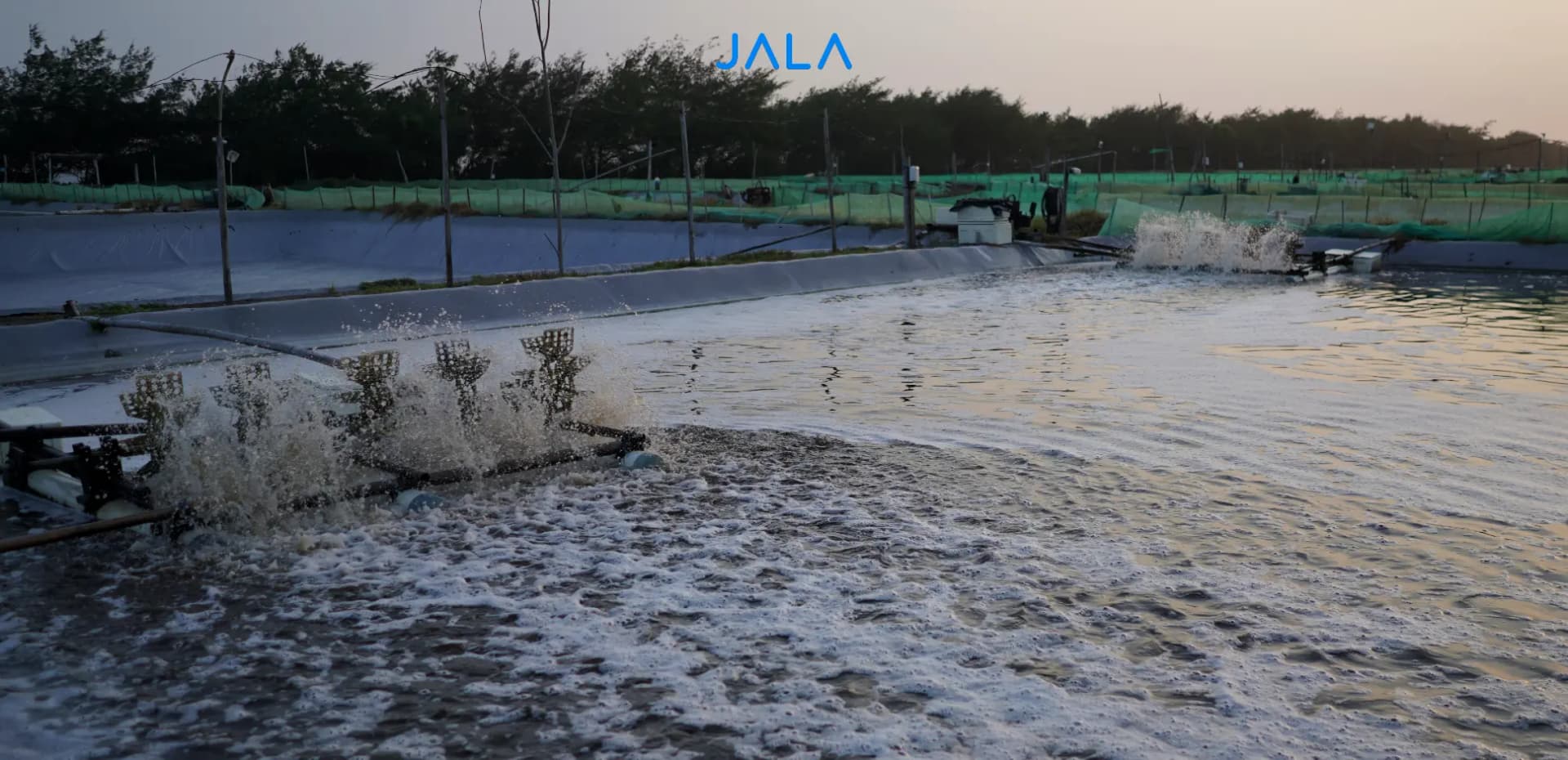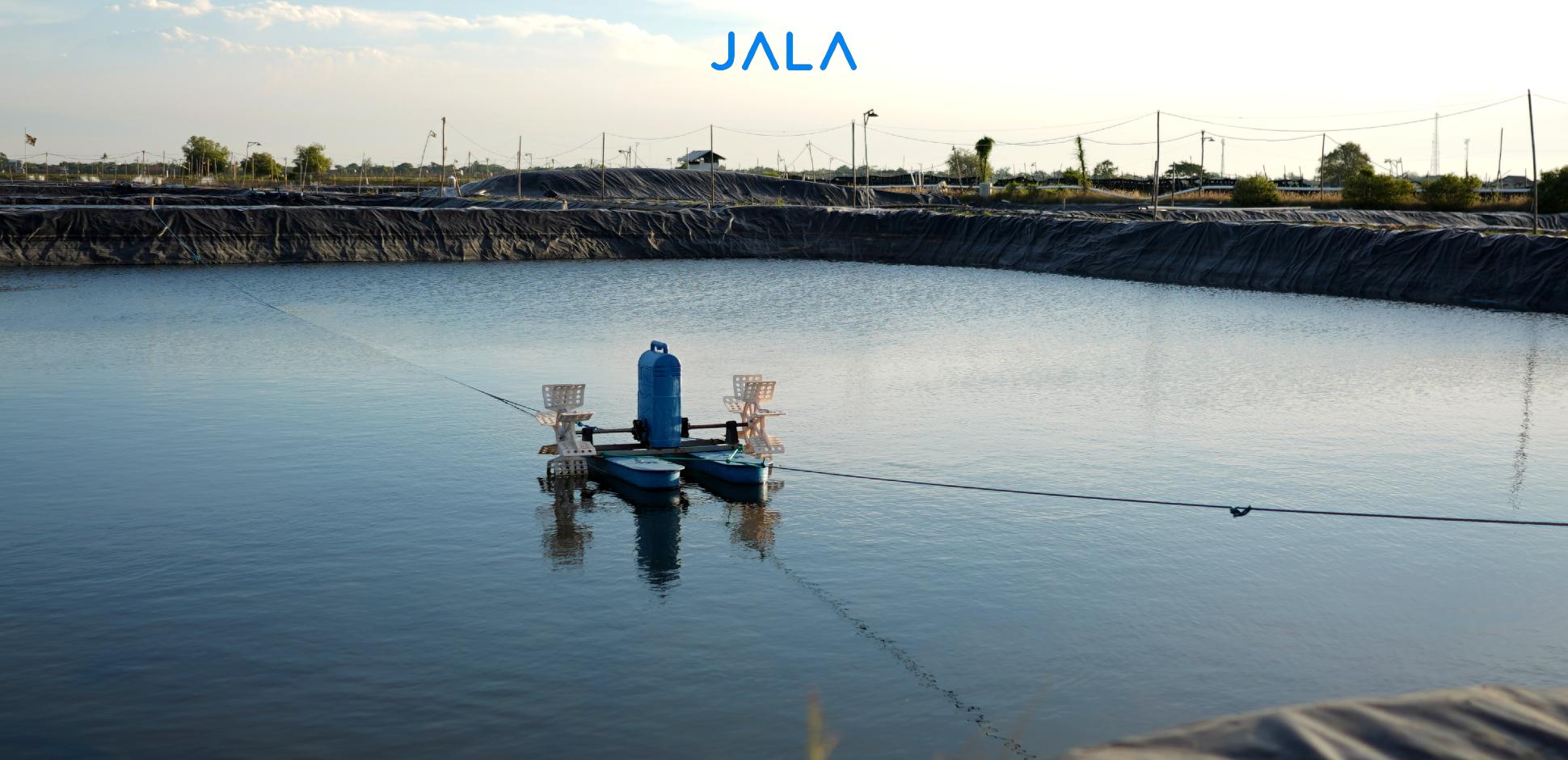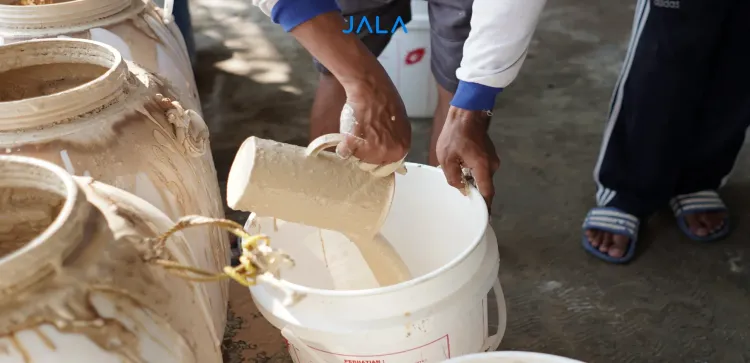
Paddle wheels in shrimp ponds are one of the essential elements to ensure cultivation success. In intensive to supra intensive farms with high stocking density, paddle wheels are required to supply dissolved oxygen demands.
When designing a shrimp farm during the cultivation preparation stage, plotting the paddle wheels should be considered. This plotting will affect the water movement in the pond. Therefore, it will optimize its function.
What are the functions of shrimp pond paddle wheels and how does it work? Discover the answer in the discussion below.
Function of Paddle Wheels in Shrimp Ponds
Shrimp pond paddle wheels serve various important functions for shrimp farming. The following are those functions:
Keeping the availability of dissolved oxygen (DO) in ponds
The primary function of paddle wheels in shrimp ponds is to supply the demand for dissolved oxygen or DO. This parameter has a significant role on shrimp respiration and metabolism directions. The ideal DO level (>4 ppm) is one of the factors that contribute to healthy shrimp growth.
Preventing differences in water characteristics
Ponds are one of the forms of still waters with upper and lower layers. Each layer may have different characteristics, including DO concentrations, and if neglected, it can be harmful for shrimp. Paddle wheels anticipate these differences.
Helping to divert waste to the drain
Waste consisting of organic matter and leftover feed at the bottom of the pond might degrade water quality. A stable water current from the paddle wheels may help divert waste to the pond drain.
Maximizing the feeding area
Paddle wheels create steady water movement, allowing the feed to be equally distributed throughout the pond area. As a result, the feed will not accumulate in one spot.
How Paddle Wheel Works

The most common wheels or aerators used in shrimp ponds is a paddle wheel with fans on both sides. The fan will create a mechanical aeration system by splashing water and creating air bubbles in the water. The more bubbles there are, the more oxygen is received from the air.
If the received oxygen is high, the DO concentration rises and the CO2 content drops. As a result of the water current generated by the paddle wheels, the pond’s DO supply will be sufficient and the water quality will be more even.
Record and Monitor Water Quality Data after Installing Paddle Wheels in Ponds
Installing paddle wheels in ponds is not enough to raise DO concentration. Farmers need to balance it with careful and effective shrimp farm management. The management also includes regular recording and monitoring of water quality data.
Water quality that is properly recorded will provide significant and valuable insight. Farmers do not need to guess or recall their cultivation conditions, simply review the record history on a regular basis.
These records allow farmers to determine whether their water quality is ideal. If it is not ideal, farmers can make the right decision based on their records. For example, if the DO level is less than 4 ppm for days, farmers might consider adding more paddle wheel units.
Conclusion
Installing paddle wheels in ponds is a significant step in shrimp farm preparation, particularly intensive and supra intensive ones. Paddle wheels will maintain the DO supply in ponds with high stocking densities, allowing the shrimp to grow optimally.
Paddle wheels have several functions, including
- Keeping the availability of DO in ponds
- Preventing differences in water characteristics
- Helping to divert waste to the drain
- Maximizing the feeding area
A paddle wheel works by generating splashes of water and air bubbles in the water. These bubbles contain oxygen, which helps the shrimp’s respiration process and metabolic reactions.
For optimal cultivation, the installation of paddle wheels must be accompanied by regular water quality management. If you are a shrimp farmer looking for an effective way to manage water quality and cultivation, you can use JALA App, the shrimp farm management application.
JALA App is #HeretoHelp various benefits, including recording, real-time monitoring, and analysis of cultivation conditions. You can also estimate cultivation, monitor shrimp prices and recent updates on cultivation, and many more.
Register yourself at app.jala.tech and download the app from the Google Play Store or App Store. Let’s do better in cultivation!





